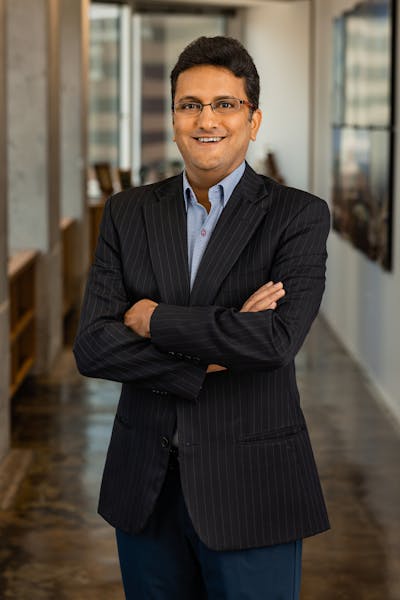
Read the full article in the 3rd quarter 2020 issue of PanStadia & Arena Management.
Overview
SoFi Stadium is the multi-purpose, 70,000-seat sports and entertainment venue that anchors the Hollywood Park complex.
“SoFi Stadium and Hollywood Park sits between the flight paths of LAX’s two runways and within half a kilometer of the Newport-Inglewood fault.
Rafael Sabelli, Walter P Moore Principal and Director of Seismic Design, told PS&AM: ‘Our firm helped E. Stanley Kroenke’s development team and his HKS-led design group to decipher this riddle through thoughtful engineering, transforming the Hollywood Park site in Inglewood to house the world-class SoFi Stadium.
‘To negotiate the site requirements, the engineering team divided the structure into three independent structures: a stadium seating bowl founded at the field level, a 100ft retention system of Mechanically Stabilized Earth, and a soaring roof canopy with columns rising through the retention system and anchored to the undisturbed earth beyond.
‘With the structural approaches thus allocated, the stadium could be kept under the FAA ceiling for approaching flight traffic, and a single unsolvable problem became three systems that could each be optimised to meet the design goals of the venue.’
Mark Waggoner, Principal and Senior Project and Roof Design Manager, added: ‘A key aspect of the SoFi Stadium experience is the ability to be both simultaneously inside and outside. The open perimeter of the roof connects to the canyon spaces that lead seamlessly down into the stadium and combine with the visually open and transparent cable-supported, single-layer ETFE foil roof to deliver an outdoor experience that just happens to be protected from the elements.
‘The entire sinuously curved roof structure, which is over 1 million ft2, covers not just the stadium but also an adjacent performance venue and American Airlines Plaza between the two structures. The roof canopy is perched atop seismic isolation
technology that delivers best-in-class seismic safety for the approximately 70,000 venue patrons.’
Sabelli continued, ‘The compression ring sits atop segmental columns. To reduce the forces that transfer between the concrete columns and the lightweight roof structure in a seismic event, Walter P Moore supported the roof on a seismic isolator atop each column.
‘These isolators allow the roof to move relative to the ground and relative to the supporting columns. The independent isolators also allow each column to move relative to other columns.
‘The seismic isolation used for SoFi Stadium incorporates several remarkable features. In addition to the unprecedented scale of the isolated roof structure, the isolators are among the largest used anywhere in the world. Additionally, the isolators allow for the
movement of the columns themselves.
‘To achieve the excellent seismic performance required, the design team adopted an enhanced design approach. The target seismic performance was ensured through comprehensive analysis, complemented by a testing program. Seismic isolation offers an
alternative to more commonly used seismic systems and is uniquely suited to such iconic structures.
‘For a sophisticated and iconic structure such as SoFi Stadium, seismic isolation is increasingly a tool for sophisticated building owners to protect massive structures. We believe this is truly the safest facility in the world.’ ”
RELATED CONTENT
The Space Frame in Action: SoFi Stadium
SoFi Stadium hosts first concert since opening
VIDEO: SoFi Stadium Near Completion
SoFi Stadium in Mondo | Stadia
SoFi, So Good
Southern California’s Historic Crowning Jewel
How an NFL Stadium is Designed | Building SoFi
LA Stadium and Entertainment District Names Founding Partners
Forbes Highlights Top 2019 Stadium Innovations
West Coast Sports Renaissance


